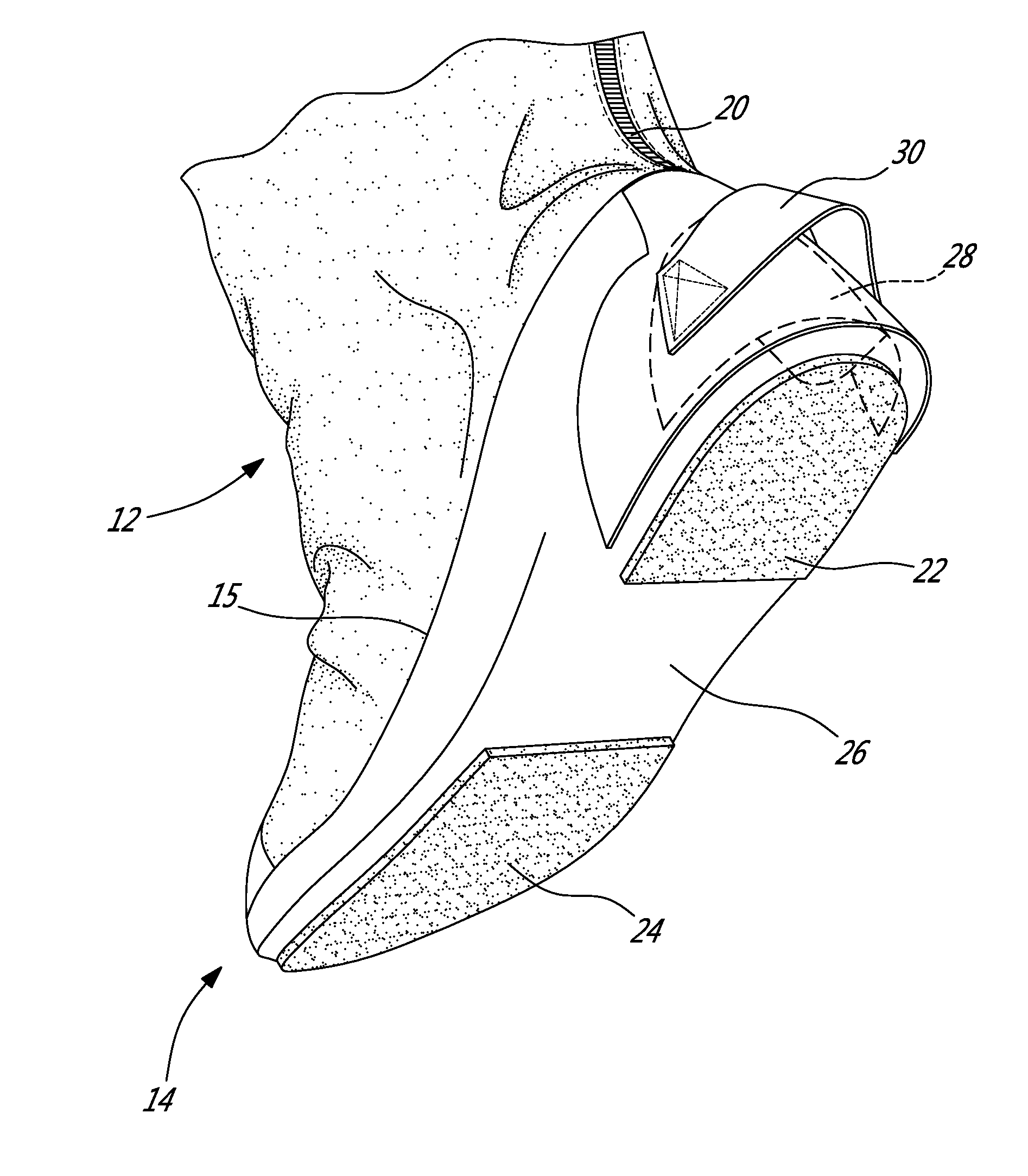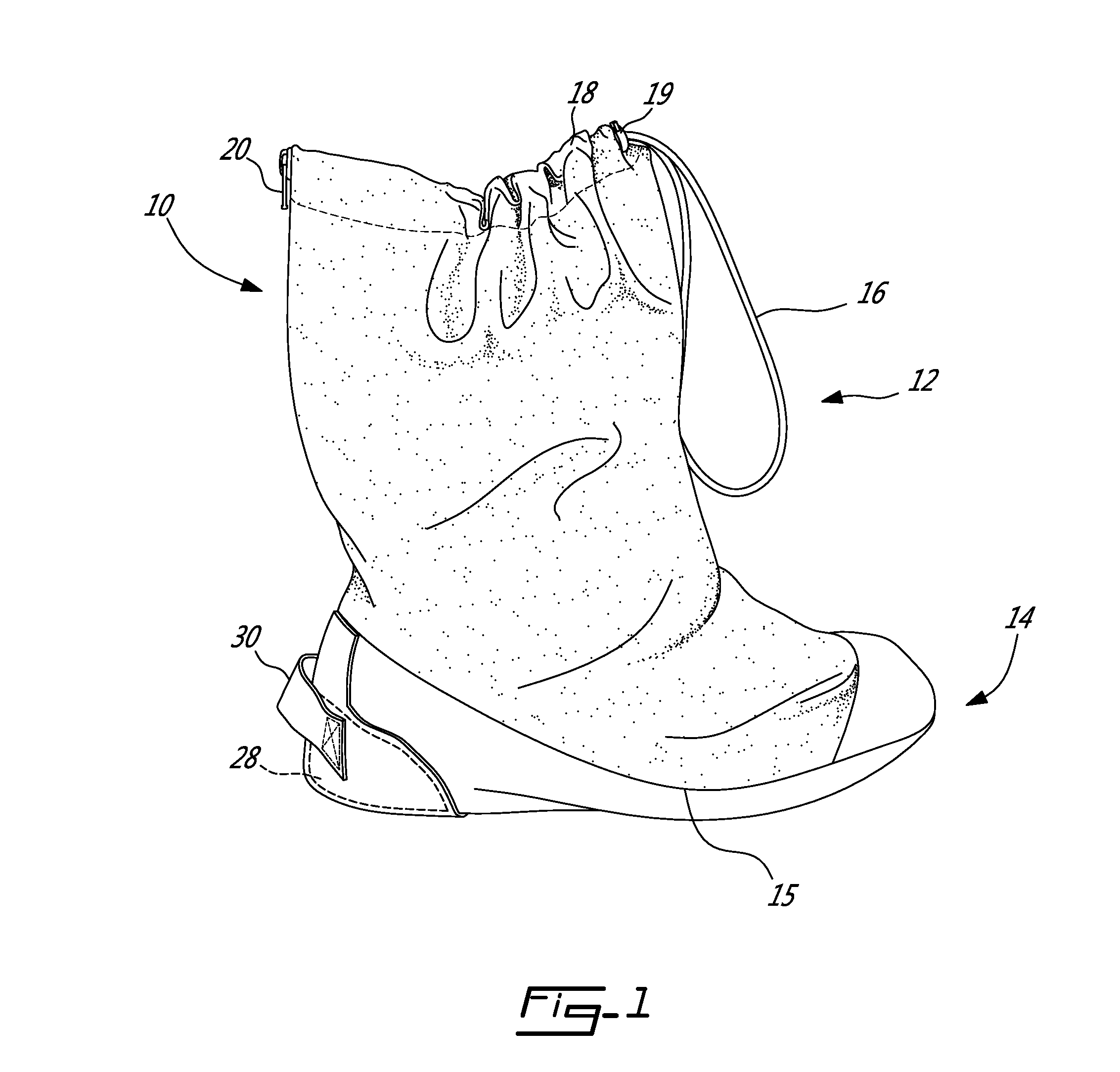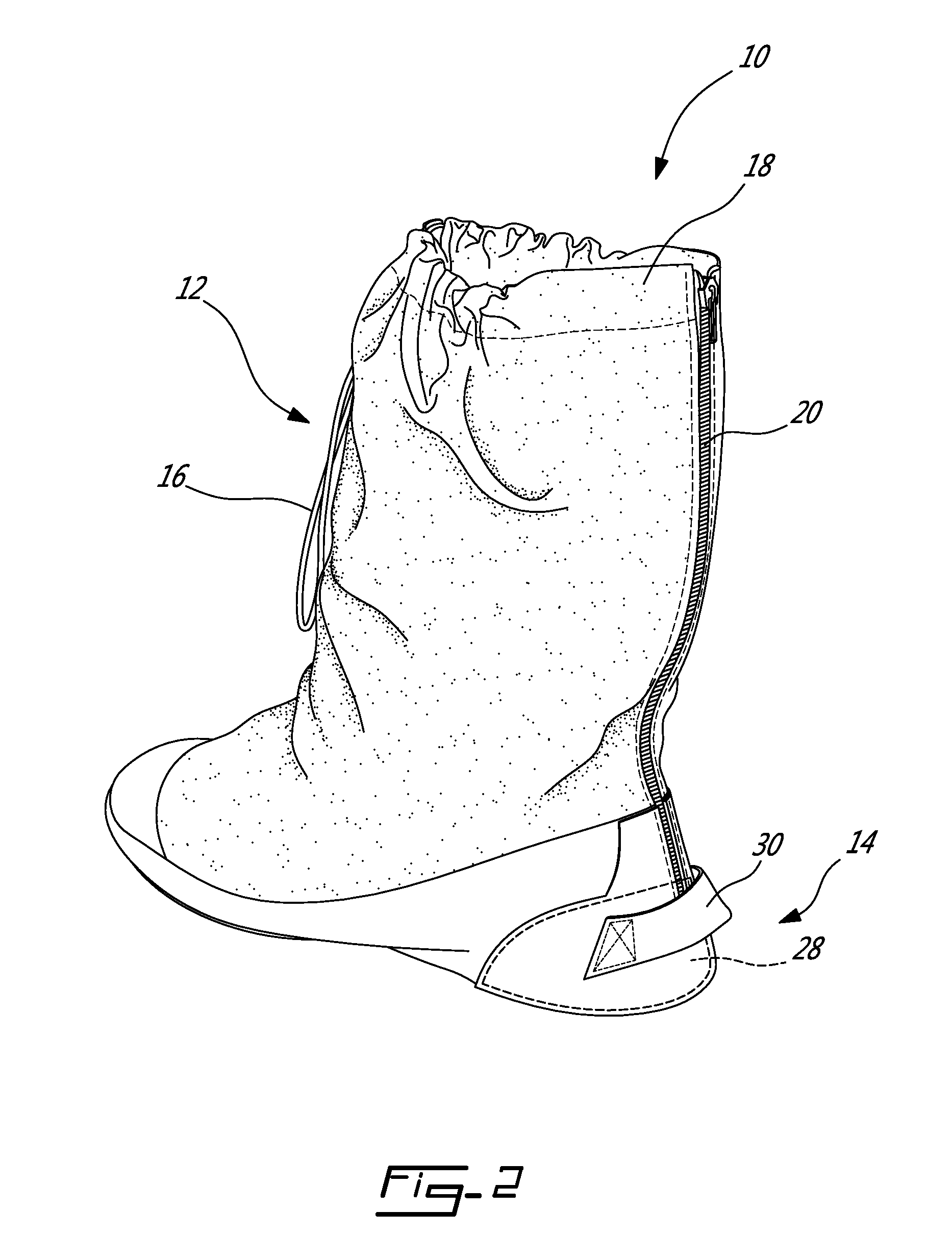Foldable protective overshoe and method of manufacturing
a protective overshoe and folding technology, applied in the field of overshoes, can solve the problems of inability to make the overshoe collapsible, difficulty in entry and removal, etc., and achieve the effect of preventing inward collapsing
- Summary
- Abstract
- Description
- Claims
- Application Information
AI Technical Summary
Benefits of technology
Problems solved by technology
Method used
Image
Examples
Embodiment Construction
[0027]FIGS. 1 to 8 illustrate an embodiment of a protective overshoe 10 which may be readily collapsed and folded in a compact configuration for carrying or storage in a pouch. The overshoe 10 is designed to be worn over conventional shoes or boots to provide among others waterproofing and dust / dirt proofing protection. The overshoe 10 generally comprises an upper portion 12 made of a lightweight collapsible / flexible waterproof fabric material which may be attached to a stretchable waterproof lower portion 14 via stitching 15, adhesive or other suitable means. As will be seen hereinafter with reference to FIGS. 10 to 12, the waterproof / stretchable lower portion 14 could also be obtained by applying a coating on a soft fabric overshoe substructure, thereby avoiding the need for fabricating two separate parts that subsequently need to be attached together, and / or using prefabricated rubber fabric, or custom die molds for construction. Further, this coating may be applied after the upp...
PUM
 Login to View More
Login to View More Abstract
Description
Claims
Application Information
 Login to View More
Login to View More - R&D
- Intellectual Property
- Life Sciences
- Materials
- Tech Scout
- Unparalleled Data Quality
- Higher Quality Content
- 60% Fewer Hallucinations
Browse by: Latest US Patents, China's latest patents, Technical Efficacy Thesaurus, Application Domain, Technology Topic, Popular Technical Reports.
© 2025 PatSnap. All rights reserved.Legal|Privacy policy|Modern Slavery Act Transparency Statement|Sitemap|About US| Contact US: help@patsnap.com



